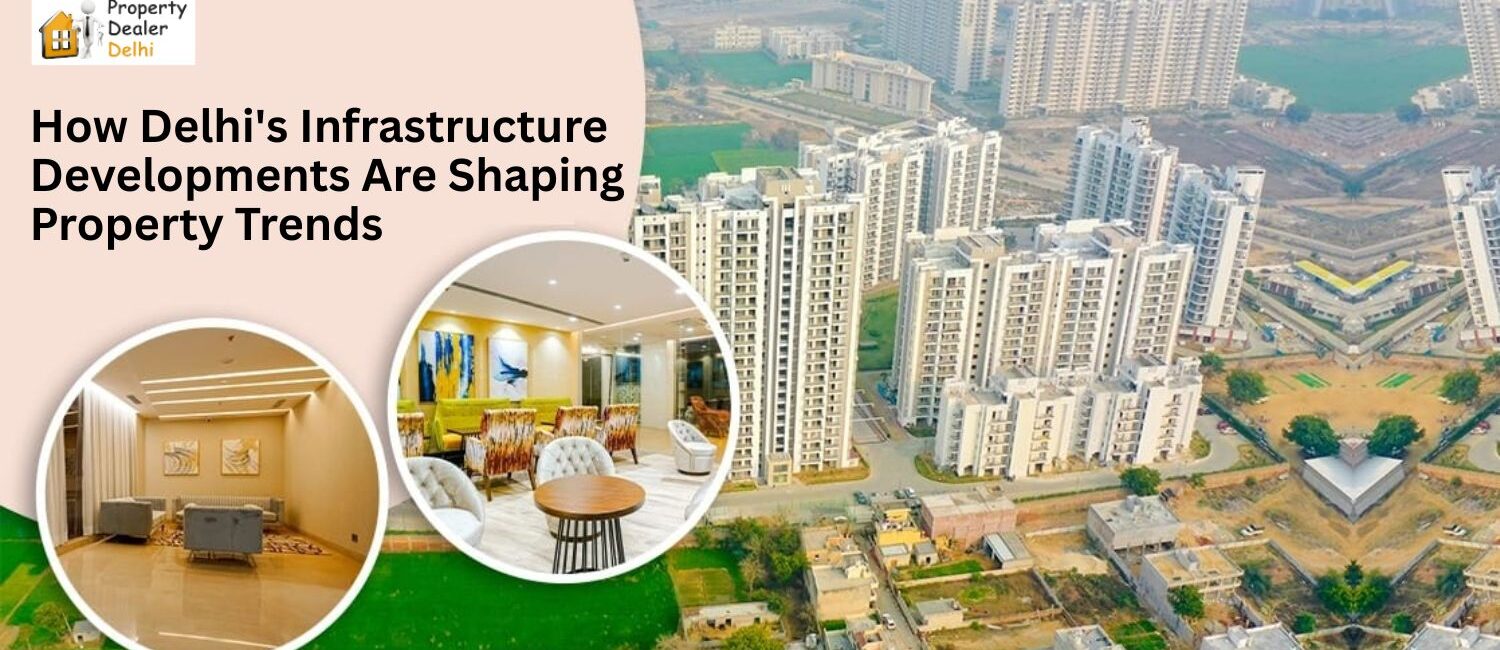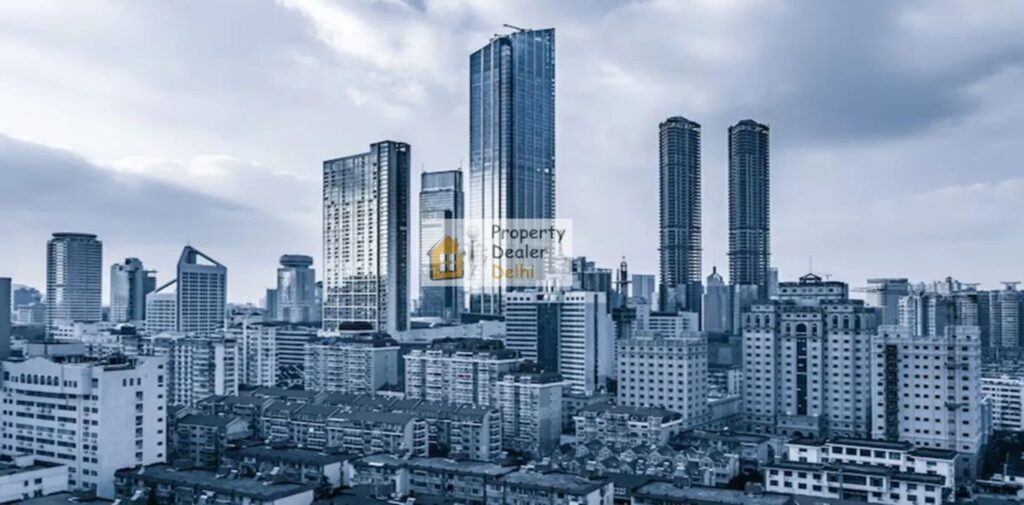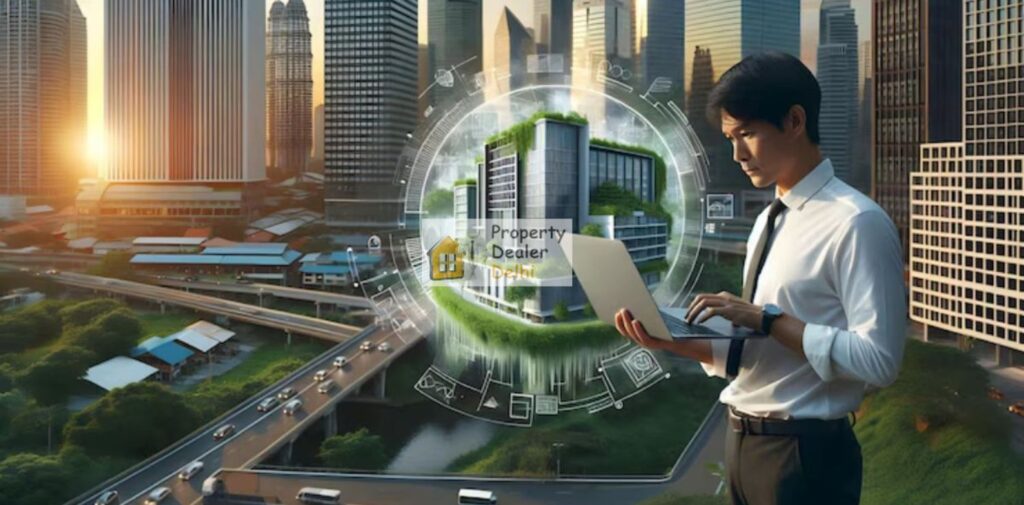
Delhi, as India’s capital, is a city that has always been a focal point for business, government, and culture. The growth of its infrastructure plays a critical role in shaping the real estate market. As new roads, metro lines, flyovers, and business hubs emerge, property trends shift, creating new opportunities for investors and buyers. In this article, we will explore how Delhi infrastructure developments are influencing property trends and why they matter for anyone looking to buy or invest in the city’s real estate market.
Improved Connectivity Driving Demand for Peripheral Areas
One of the most significant impacts of infrastructure development on Delhi’s property trends is improved connectivity, especially with the expansion of the Delhi Metro network. New metro stations and extensions are making previously less-accessible areas more attractive to buyers and investors. Areas like Dwarka, Najafgarh, and parts of Greater Noida, which were once considered distant from the city center, are now seeing a rise in property demand.
The availability of affordable housing in these well-connected areas has attracted middle-class homebuyers who prefer spacious homes at lower prices compared to more expensive central areas. Additionally, people working in central business hubs are now choosing to live in the suburbs due to easy access to the metro. This has led to a surge in demand for residential properties in areas with newly developed metro stations, creating new investment opportunities in the peripheries of Delhi.

Commercial Real Estate Booms with Infrastructure Expansion
The development of infrastructure in Delhi also has a profound impact on commercial real estate. As the city grows and the number of businesses increases, the need for commercial spaces—such as office buildings, retail outlets, and business parks—also rises. In particular, areas with new roads and metro connectivity have become prime locations for businesses.
For example, areas around the airport, including Aerocity and IGI Airport, have seen the construction of modern office spaces and commercial hubs. The new infrastructure not only attracts businesses but also supports the retail sector, with shopping malls and restaurants following the demand from workers and residents in the area. Moreover, the growth of commercial hubs has led to an increase in demand for residential properties nearby, as employees prefer to live close to their workplaces.
Smart City Projects and Their Impact on Property Value
Delhi is also part of India’s Smart City initiative, which aims to improve urban living through the use of technology and smart infrastructure. These projects, which include the installation of smart traffic management systems, the development of clean energy solutions, and the creation of eco-friendly buildings, are significantly changing the way Delhi functions.
Smart cities not only focus on the use of technology but also ensure better living standards by improving sanitation, waste management, and overall public services. This focus on enhancing the quality of life has made areas under smart city projects more attractive to homebuyers. Properties in these areas often see higher demand and appreciation in value because buyers are drawn to modern amenities, improved security, and better urban management. As more smart city projects are completed in Delhi, areas like New Delhi Railway Station and parts of East Delhi are expected to experience growth in both residential and commercial property values.

Development of New Business Hubs Increasing Property Demand
With the expansion of the metro system and improved road networks, Delhi is seeing the rise of new business hubs in areas that were once on the outskirts. Locations such as Noida, Greater Noida, and parts of South Delhi are becoming commercial hotspots, with businesses setting up offices in these newly connected areas.
For example, the creation of business parks in Noida and Greater Noida has driven both the demand for commercial office spaces and residential properties. These business hubs are attracting corporate companies, startups, and tech giants, leading to more job opportunities and an influx of professionals into these areas. As a result, demand for residential real estate in the vicinity of these hubs has grown. This trend is likely to continue as more developers focus on building integrated townships, where people can live, work, and shop within the same area.
Conclusion: Delhi Infrastructure Developments
The rapid pace of infrastructure development in Delhi is transforming the city’s real estate market in profound ways. With better connectivity, the rise of new business hubs, and the focus on modern amenities through smart city projects, Delhi’s property trends are shifting to meet the demands of a growing and dynamic population. For investors and buyers, keeping an eye on these infrastructure developments can provide valuable insights into where to invest for long-term growth.
Whether you’re looking for residential properties in newly connected areas or considering commercial real estate in business districts, the ongoing infrastructure changes are shaping the future of Delhi’s real estate market. With continued investments in roads, metro lines, and smart city initiatives, Delhi is becoming an even more attractive destination for property buyers and investors. It’s clear that the city’s future lies in its infrastructure, and the opportunities it presents for real estate growth are only set to increase.

